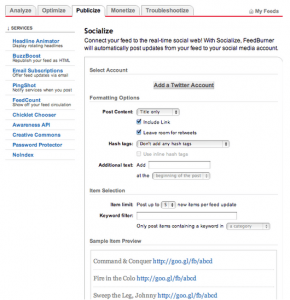IAB Tech Lab CEO Anthony Katsur calls for ‘Great Reset’ for ad industry facing epic changes to addressability and managing consumers’ privacy.
Two years ago, IAB CEO David Cohen called the situation adtech faced a “slow-motion train wreck.” Last week, IAB Tech Lab CEO Anthony Katsur called for a “Great Reset” to prepare those in the digital advertising industry for changes to how marketers identify targets and measure campaigns.
“Whether it’s the cookie, the device ID, the IP address, 2024 is the year of accelerated signal loss,” said Katsur at “As the Cookie Crumbles,” a New York event hosted by IAB Tech Lab dedicated to helping maintain addressability and privacy across the adtech ecosystem.
Why we care. With the phaseout of third-party cookies in its Chrome browser, adtech giant Google launched Privacy Sandbox to establish new privacy protocols and privacy-preserving APIs for digital advertisers. Adtech businesses now have to adjust to this and figure out how to deliver addressability while remaining compliant with new privacy regulations and practices. Seven more states have passed privacy legislation this year, adding to the patchwork data regulations spreading across the U.S. Some of these new laws are enforceable as early as January 2025.
One issue at a time. “In the ‘Great Reset’ we need to reset our thinking about identity, addressability and data security, in a privacy-first manner, and become a more regulated ecosystem coupled with signal loss,” said Katsur.
The new thinking addresses signal loss, the Privacy Sandbox and new privacy regulations as individual, though related, problems to solve.
“Cookie deprecation and Privacy Sandbox are two distinct events,” Katsur explained. “We as an industry have conflated those as one.”
Cookie deprecation. At the beginning of the year, Google restricted third-party cookie capabilities for 1% of its Chrome users. The elimination of cookies for the rest of its users is slated for Q3, with some qualifications and delays through the end of the year.
Marketers can compensate for this signal loss and maintain addressability and measurement by adopting any number of options Katsur identified, including:
- ID resolution platforms.
- Data clean rooms.
- Contextual targeting.
- Seller-defined audiences.
- Server-side technologies.
- Privacy-enhancing technologies.
- ID-less identity resolution solutions.
Privacy Sandbox. Google’s Privacy Sandbox initiative was a significant step in preparing the ad ecosystem for new privacy protocols. After it opened for testing earlier this year, IAB released a scathing assessment. Industry groups like IAB, as well as adtech businesses, remain skeptical about Google’s intentions as an adtech competitor. The company is being closely monitored in Europe by the U.K.’s Competition and Markets Authority (CMA).
“The Privacy Sandbox, at its core, represents the introduction of an SSP and an ad server in the Chrome browser,” said Katsur. “Make no mistake, Chrome is in the adtech game now. This is unprecedented in our ecosystem and represents a radical change to how advertising is transacted. Everyone is impacted by this change.”
Hard work in the Sandbox. Adtech companies using the Privacy Sandbox have faced challenges adjusting their business models and workflows to new protocols.
“I tend to think of Privacy Sandbox as a privacy model primarily, and an adtech model as a secondary function of that,” said Joshua Prismon, chief architect for digital ad marketplace Index Exchange. “And because of that, there’s an amount of complexity that you have to navigate because there are rules in terms of communications and what you can disclose that have a knock-on impact in the ways we did business in the past.”
Prismon also cited difficulties debugging new processes because of the lack of visibility into Chrome.
Adtech company Dstillery has been reluctant to invest more time than necessary in some Privacy Sandbox protocols unless more of the industry follows suit.
“We’ve made strong commitments internally to the Attribution Reporting API because that really fits with what we’re doing, and we’re taking a wait-and-see on doing what we can to support the advancement of things like Protected Audiences, but not making big commitments on it,” said Brian May, Dstillery’s principal engineer.
More to come from Google. “We do want to engage with the ecosystem,” said Amit Varia, director of product management at Google. “We’ve heard from the ecosystem on how we can improve our documentation and keep it more up-to-date. We’ll have more coming out in the coming weeks to continue to help the ecosystem at scale prepare for how to best use the APIs, as well as what to do to build a more private internet.”
“While the cookie does in fact power myriad use cases across the industry, this is about gaining a fundamental understanding of how the privacy sandbox functions and which use cases are supported to determine how the industry can continue operations in a world without cookies,” Katsur said.
The post Digital advertising braces for signal loss and Privacy Sandbox appeared first on MarTech.
MarTech(14)
Report Post







